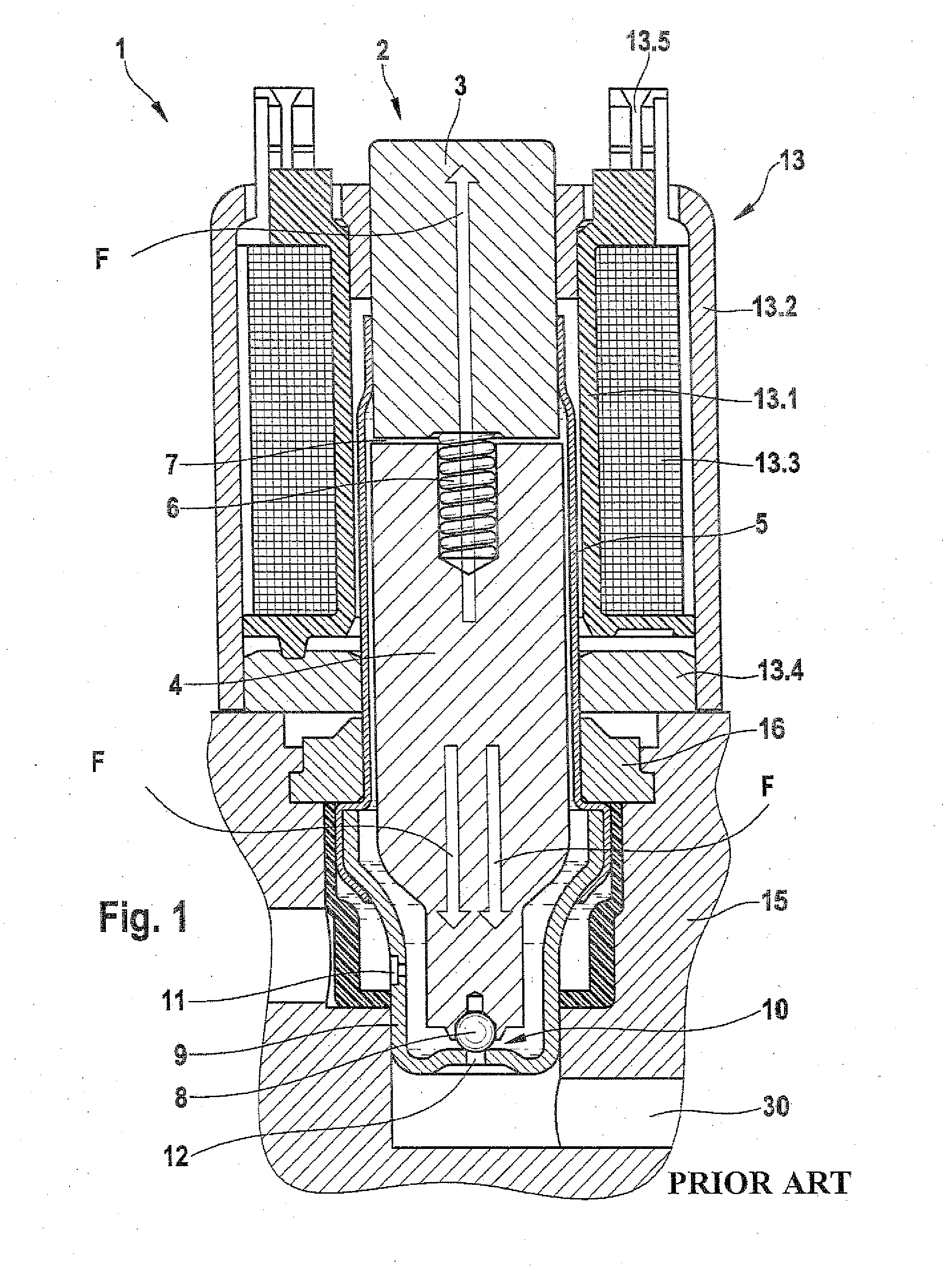Solenoid valve
- Summary
- Abstract
- Description
- Claims
- Application Information
AI Technical Summary
Benefits of technology
Problems solved by technology
Method used
Image
Examples
Embodiment Construction
[0018]As can be seen from the graphs in FIG. 4, a conventional solenoid valve, valve 1, embodied as an on-off valve with a flow through it in the stroke-closing direction has the schematic courses shown in column 1 of the magnetic force Fmagnetic, the spring force Fspring, and the fluid force Fhydralic. A conventional solenoid valve, valve 2, embodied as a continuous valve with a flow through it in the stroke-opening direction has the schematic courses shown in column 2 of the magnetic force Fmagnet, the spring force Fspring, and the fluid force Fhydraulic. As can be seen from FIG. 3, the course of the force of the magnetic force Fmagnetic should be as flat as possible over the stroke. The restoring spring should be embodied as stiffly as possible; that is, the restoring spring 26 should have a high spring stiffness. The course of the fluid force Fhydraulic over the stroke should also be as flat as possible. The schematic courses of the magnetic force solenoid valve, the spring forc...
PUM
 Login to View More
Login to View More Abstract
Description
Claims
Application Information
 Login to View More
Login to View More - R&D
- Intellectual Property
- Life Sciences
- Materials
- Tech Scout
- Unparalleled Data Quality
- Higher Quality Content
- 60% Fewer Hallucinations
Browse by: Latest US Patents, China's latest patents, Technical Efficacy Thesaurus, Application Domain, Technology Topic, Popular Technical Reports.
© 2025 PatSnap. All rights reserved.Legal|Privacy policy|Modern Slavery Act Transparency Statement|Sitemap|About US| Contact US: help@patsnap.com



